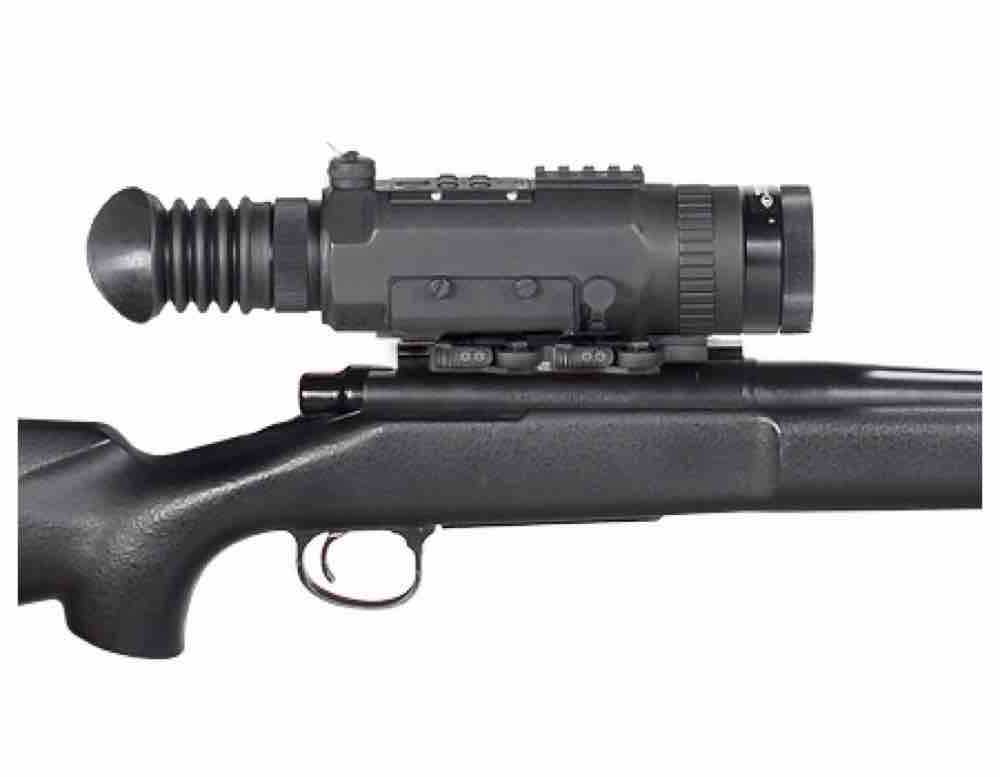
I’ve always been fascinated by the thrill of hunting at night, but it can be challenging without the right equipment. That’s why I’ve discovered the game-changing benefits of night vision scopes.
In this article, I’ll share my insights on how to choose the perfect night vision scope for your needs and provide tips on maximizing accuracy in low light conditions.
Avoid common mistakes and take your hunting success to new heights with the power of night vision scopes.
Benefits of Night Vision Scopes for Hunting
I can’t imagine hunting without my night vision scope—it greatly enhances my ability to spot and track game in low light conditions. As an avid hunter, I understand the importance of having the right equipment to maximize my chances of success. The night vision scope allows me to see clearly even when the sun has set, giving me a distinct advantage over game that relies on darkness for cover.
One of the key benefits of using a night vision scope is the ability to spot game from a distance. The scope’s advanced technology amplifies the available light, making it easier to identify animals lurking in the shadows. This increased visibility allows me to plan my approach and make calculated shots, increasing my chances of a successful hunt.
Furthermore, the night vision scope enables me to track game with precision. Its high-resolution imagery helps me follow the movements of animals, even in the darkest of nights. This allows me to anticipate their behavior and adjust my strategy accordingly. Without the night vision scope, I’d be limited to hunting only during daylight hours, missing out on the excitement and challenge of pursuing game during twilight or dawn.
Choosing the Right Night Vision Scope for Your Needs
To choose the right night vision scope for your needs, consider the three key factors: magnification, resolution, and type of night vision technology.
Magnification determines how close you can see the target, so it’s important to choose a scope with adequate magnification for your hunting requirements. Whether you need to spot targets from long distances or have a wider field of view for close-range hunting, selecting the right magnification power is crucial.

Resolution is another important factor to consider. A higher resolution means a clearer and more detailed image. This is especially important when hunting in low-light conditions, as it allows you to identify targets more easily. Look for scopes with high-resolution capabilities to ensure optimal performance in varying lighting conditions.
The type of night vision technology used in the scope is also a key consideration. There are different generations of night vision technology available, with each offering different levels of performance. Generation 1 is the most affordable and widely available, while Generation 3 provides the highest quality images. Consider your budget and hunting needs when choosing the right technology for your night vision scope.
Tips for Using Night Vision Scopes in Low Light Conditions
Using night vision scopes in low light conditions requires patience and proper technique. In order to make the most out of your night vision scope, here are a few tips to keep in mind:
- Adjust the brightness: Start by adjusting the brightness settings on your night vision scope to match the ambient light conditions. This will help you achieve a clear and crisp image without any glare or distortion.
- Use the right magnification: Depending on the distance between you and your target, it’s important to select the appropriate magnification level on your night vision scope. Too high of a magnification can result in a narrower field of view, making it difficult to spot your target.
- Stay still and be patient: When using a night vision scope in low light conditions, it’s crucial to remain as still as possible. Any sudden movements can disrupt your focus and make it harder to spot your target. Patience is key, as it may take some time for your eyes to adjust to the darkness.
- Scan your surroundings: Instead of fixating on one spot, make sure to scan your surroundings with your night vision scope. This will help you identify any movement or potential targets that may be lurking in the darkness.
Maximizing Accuracy With Night Vision Scopes
Achieving pinpoint accuracy with night vision scopes requires proper calibration and alignment.
When using a night vision scope, it’s crucial to ensure that the reticle is properly aligned with your firearm. This can be done by adjusting the windage and elevation knobs until the reticle aligns with the impact point of your shots.
It’s also important to calibrate the scope for the specific ammunition you’ll be using. Different bullet weights and velocities can have an impact on the trajectory of your shots, so it’s essential to make the necessary adjustments to compensate for these variables.
Additionally, it’s recommended to zero your night vision scope in low light conditions, as this will provide a more accurate representation of how the scope performs in real hunting situations.
By taking the time to properly calibrate and align your night vision scope, you can significantly increase your accuracy and improve your hunting success.
Common Mistakes to Avoid When Using Night Vision Scopes for Hunting
One common mistake I’ve encountered when using night vision scopes for hunting is forgetting to properly adjust the focus and clarity settings. It’s easy to get caught up in the excitement of the hunt and overlook this crucial step. However, failing to adjust the focus and clarity settings can significantly affect your ability to spot and target game in low-light conditions.
To help you visualize the importance of this adjustment, imagine looking through a foggy window. The image would be blurred and unclear, making it difficult to see any details. Similarly, when using a night vision scope without adjusting the focus and clarity settings, the image can appear hazy and distorted, hindering your ability to accurately identify your target.
Here are four other common mistakes to avoid when using night vision scopes for hunting:
- Failing to account for distance: Night vision scopes have different ranges, and it’s essential to know the maximum effective range of your device to avoid disappointment or missed opportunities.
- Ignoring battery life: Night vision scopes require power to function, so always ensure you have spare batteries or a reliable power source to prevent your device from dying at a critical moment.
- Using excessive magnification: While it may be tempting to zoom in for a closer look, using excessive magnification can reduce your field of view and make it harder to spot game.
- Neglecting proper maintenance: Night vision scopes require regular cleaning and maintenance to ensure optimal performance. Neglecting this can lead to reduced image quality and potential malfunctions.
By avoiding these common mistakes, you can maximize your hunting success and make the most out of your night vision scope.
Conclusion
In conclusion, night vision scopes are invaluable tools for hunters looking to maximize their success in low light conditions. By providing enhanced visibility, these scopes allow for precise targeting and improved accuracy.
Choosing the right night vision scope and following tips for use can greatly enhance hunting experiences.
However, it’s important to avoid common mistakes to ensure optimal performance.
With the right equipment and knowledge, hunters can confidently navigate the darkness and increase their chances of a successful hunt.





